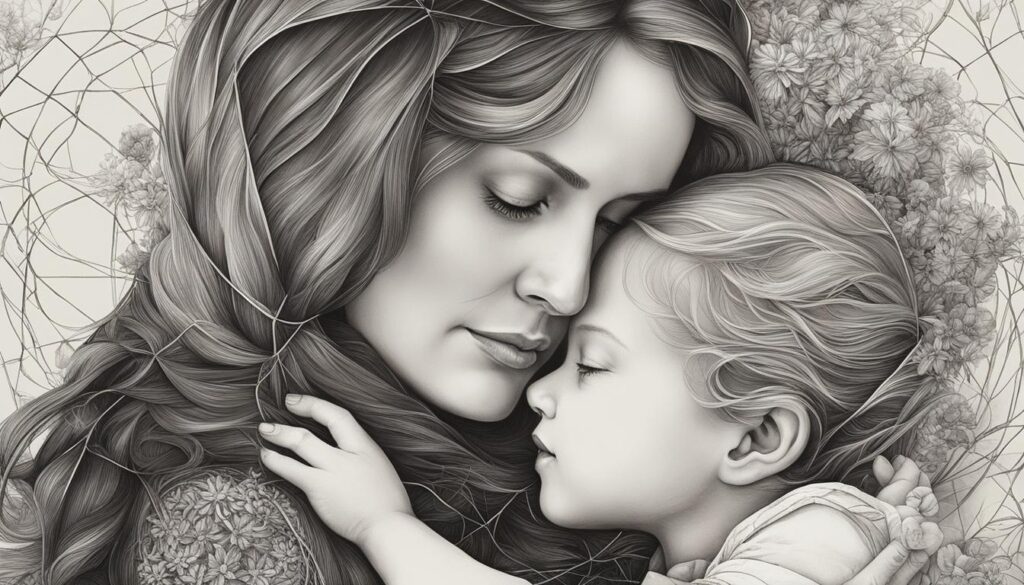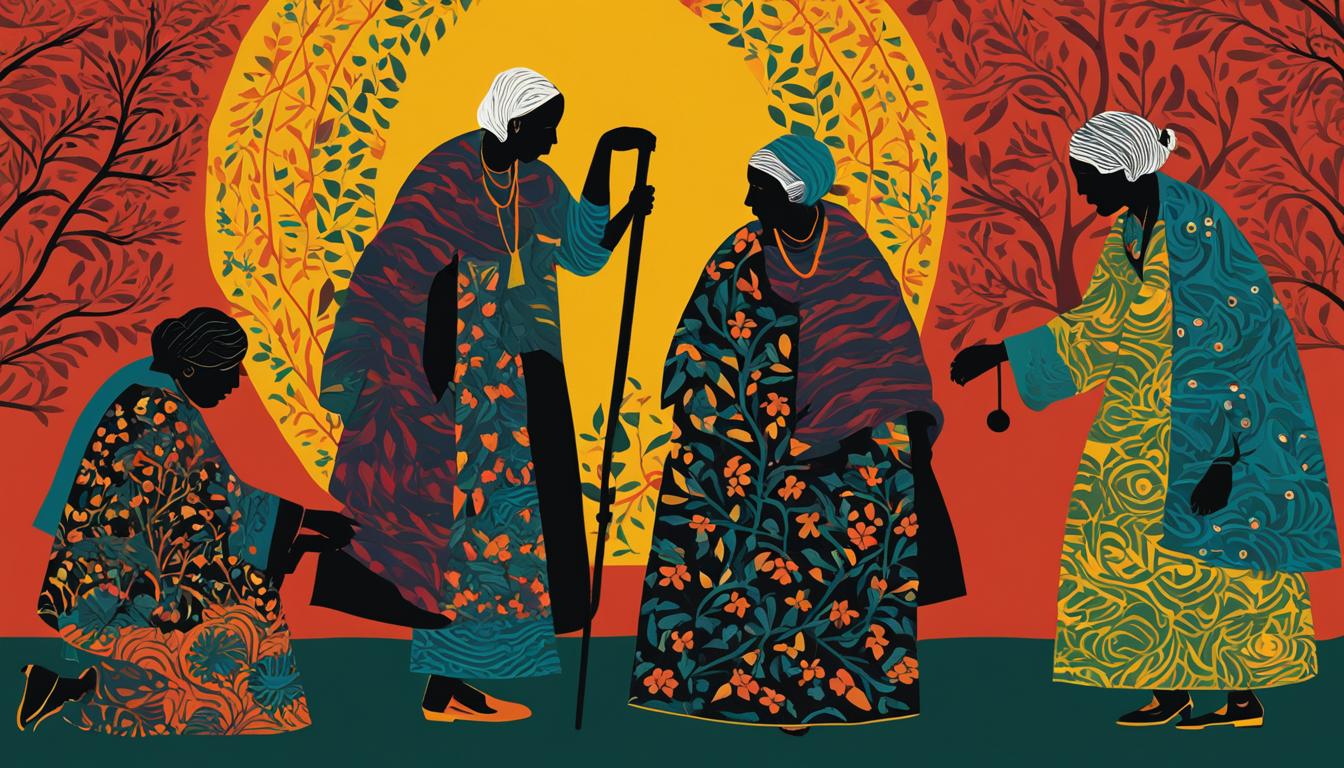If you’re a fan of Doris Lessing’s work or are in search of a poignant and thought-provoking read, then “The Grandmothers” is the book for you. This collection of four short novels explores the intricate and multifaceted nature of human relationships, delving into themes of love, desire, loss, and resilience.
In this article, we’ll provide a comprehensive book summary of “The Grandmothers,” analyzing the underlying themes, imagery, and symbolism of each novella. We’ll discuss how society, culture, gender dynamics, and power dynamics shape the characters’ lives and relationships. Additionally, we’ll explore the complex and varied representations of motherhood, and the characters’ experiences of loss and grief.
Whether you’re an avid reader, a student of literature, or simply looking for a gripping and thought-provoking read, “The Grandmothers” is bound to captivate and engage you from start to finish.
A Multifaceted Exploration of Relationships
In “The Grandmothers,” Doris Lessing masterfully portrays a range of relationships that are complex and nuanced. The four novellas in the collection each highlight different types of relationships, including romantic relationships, familial relationships, and friendships. Through these relationships, Lessing explores a variety of themes, such as love, desire, loss, and power dynamics.
One of the most notable relationships in the book is that between Roz and Lil in the novella “The Grandmothers.” As childhood friends who become sisters-in-law and then lovers, their relationship challenges traditional notions of family and love. The taboo nature of their relationship adds an extra layer of complexity, making it a fascinating point of analysis.
The novella “Victoria and the Staveneys” explores race and class relationships through the interactions between Victoria, the daughter of a Black single mother, and the wealthy white Staveneys. The dynamics between Victoria and the Staveneys reveal the inherent power imbalances brought about by racial and class differences.
Overall, “The Grandmothers” presents a multifaceted and rich exploration of relationships that challenges traditional norms and expectations. Through her characterization and nuanced prose, Lessing offers readers a thought-provoking and unforgettable portrayal of human connection.
Themes of Love and Desire
In “The Grandmothers,” Doris Lessing delves into the profound exploration of love and desire. The complex and multifaceted nature of human emotions is skilfully depicted through the lives of characters. Their motivations and desires have a significant impact on their behavior and relationships.
The book provides a unique insight into the different types of love and the struggles associated with them. The characters’ personal desires sometimes conflict with social norms, leading to various consequences and outcomes.
The theme of desire is explored in various forms, from young love to illicit relationships. Lessing navigates through the complexity of human relationships, portraying the passion, desire, and disillusionment that often follows.
Throughout the four short novels, the characters face numerous challenges, and their choices hugely impact their experiences of love and desire. The book captures the delicate balance between passion, desire, and self-preservation.
The Grandmothers is a masterful exploration of human emotions and relationships, skillfully weaving together complex themes of love and desire.
The Impact of Society and Culture
In The Grandmothers, Doris Lessing portrays the influence of society and culture on the characters and their choices. The characters are shaped by the societal norms and expectations of the communities in which they live. The consequences of their actions reflect the impact of social and cultural pressures on their lives.
One example of this is the character of Roz, who faces societal disapproval for her relationship with her best friend’s son. Despite her own reservations, Roz is discouraged from speaking out against the relationship due to societal expectations about appropriate behavior for women. This highlights the role of gender in shaping societal norms and expectations.
“As the societal demands tug on the characters, their choices come with consequences that reflect the impact of such pressures.” – Doris Lessing
The Complexity of Motherhood
One of the central themes in “The Grandmothers” is motherhood, which is explored in various ways across the four novellas. While each story offers a unique perspective, the book summary highlights a common thread of motherhood as a complex role that is often fraught with challenges.
“The Reason for It” tells the story of three generations of women, each grappling with the complexities of motherhood in their own way. The protagonist, Sarah, struggles to connect with her daughter, while her mother, Caroline, is haunted by the memory of her own distant mother. The intergenerational dynamic highlights the complexities of familial relationships and the challenges of breaking destructive patterns.
“A Love Child” explores the taboo subject of a mother’s love for her son, who is the product of an affair. Lessing examines the societal expectations and judgments placed on mothers, and the toll it takes on the characters.
“The Grandmothers” tells the story of two mothers who fall in love with each other’s sons and must navigate the consequences of their unconventional relationships. The novella explores the boundaries and limitations of motherly love and the complexities of raising children.
“Victoria and the Staveneys” delves into the class divide between a working-class mother and the wealthy family that takes her daughter under their wing. Lessing delves into the nuances of motherhood across class lines and the impact of societal structures on maternal relationships.

“There is no love like a mother’s love,” is the common refrain, but “The Grandmothers” challenges this notion and forces the reader to grapple with the complexities and contradictions of motherhood.”
Gender Dynamics and Power
In “The Grandmothers,” Doris Lessing explores the complex and often fraught dynamics of power and gender. Through the four short novels, Lessing presents a range of characters who grapple with the expectations and limitations imposed upon them by society.
One striking example is the character of Roz in the novella “The Grandmothers.” As a successful career woman, Roz defies traditional gender roles and expectations. However, she is still deemed incompatible with her male partner due to societal pressure and gendered expectations.
“The Grandmothers showed him that not every woman is a mother; women have other ambitions, too.”
Lessing uses Roz’s story to showcase the hurdles that women like her face in attempting to assert their power and maintain their agency in a male-dominated world.
| Gender Dynamics | Power |
|---|---|
| The limitations of gender roles in society impact characters’ lives and relationships. | Power plays a significant role in shaping characters’ actions and decisions. |
| Characters struggle to reconcile societal expectations with their own desires and ambitions. | Individuals jockey for position and control, often at the expense of others. |
| Gender inequality plays a role in the consequences that characters face. | Those in positions of power are frequently able to avoid repercussions for their actions. |
The Grandmothers offers a powerful glimpse into the complexity of gender dynamics and power, providing a thought-provoking commentary on the impact that societal norms can have upon individuals’ lives and relationships.
Loss, Grief, and Resilience
“The Grandmothers” explores the profound impact of loss and grief on individuals and their relationships. The characters in the book experience various forms of loss, including the loss of loved ones and the loss of identity. Through their experiences, the novellas highlight the complexity of grief and the different ways in which people cope with it.
Despite the pain and heartache of loss, the characters also demonstrate remarkable resilience, which is a central theme of the book. They find ways to rebuild their lives and move forward, even as they carry the weight of their grief with them. The resiliency of the characters serves as a powerful reminder of the human capacity for survival and growth in the face of adversity.
As Lessing writes in the novella “Victoria and the Staveneys,” “A woman doesn’t get better because she’s over it. And she never forgets that person, but she learns to live with it and she gets a kind of pride, or maybe that’s the wrong word, from coping with it herself, alone.”
“Grief and its aftermath can be isolating experiences. But “The Grandmothers” reminds us that we are capable of incredible strength in the face of loss. The characters in the novellas are a testament to the human capacity for resilience.”
Symbolism and Imagery
In “The Grandmothers,” Doris Lessing masterfully employs symbolism and imagery to enhance the storytelling and deepen the themes explored in the book. From the opening pages, readers are drawn into a rich and immersive world filled with vibrant descriptions and evocative symbolism.
One of the most notable examples of symbolism in the book is the recurring image of the ocean. Throughout the four novellas, the ocean serves as a powerful symbol of both freedom and danger. It represents the vast unknown and the potential for adventure, but also the risk of being swept away by the tides. This dichotomy reflects the characters’ struggles with love and desire, and their attempts to navigate the complex and unpredictable waters of their relationships.
“The ocean was a new world, where they could live differently, where marriage didn’t matter, only love and desire.”
Another key element of the book’s imagery is the contrast between light and darkness. The characters frequently find themselves torn between the safety and comfort of the familiar, and the allure of the unknown. This tension is conveyed through a series of vivid descriptions that highlight the interplay between light and shadow, as characters move through sun-drenched beaches and moonlit gardens.
Lessing’s use of symbolism and imagery elevates “The Grandmothers” to a work of enduring literary significance. Through precise and evocative language, she creates a world that is both familiar and fantastical, grounded in the realities of human relationships while also exploring the depths of the human psyche.
Conclusion
“The Grandmothers” by Doris Lessing is a thought-provoking and multi-dimensional collection of short novels that explores complex themes such as love, desire, loss, grief, and resilience. Lessing’s masterful storytelling and vivid imagery make for a compelling read that leaves a lasting impression on the reader.
The four novellas in the book offer a nuanced exploration of relationships and gender dynamics, as well as a poignant commentary on the influence of society and culture. Lessing’s portrayal of motherhood is refreshingly multifaceted, showcasing the different facets and complexities of this central theme.
Symbolism plays an important role in enhancing the storytelling, and Lessing’s use of this literary device adds depth and complexity to the narratives. Ultimately, “The Grandmothers” stands out as a unique and meaningful contribution to the literary canon, and is a must-read for anyone seeking a thought-provoking and emotionally resonant book.



